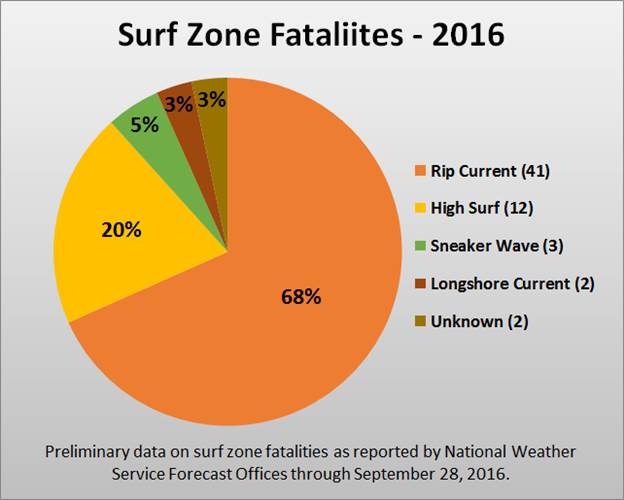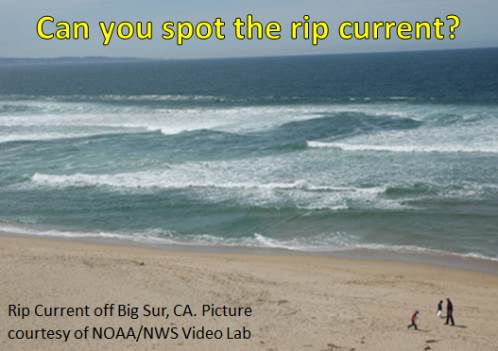Every year, dozens of surf zone fatalities occur at beaches across the United States.Over two-thirds of these fatalities are drownings due to rip currents. These drownings occur when swimmers are pulled away from the shoreline and are unable to swim to shore or keep themselves afloat because of poor swimming skills, fear, panic, and/or exhaustion. Rip currents can be particularly dangerous because many swimmers either aren’t familiar with or don’t fully understand them.

Rip currents are defined as relatively small-scale surf-zone currents (usually 50 to 100 feet wide), moving away from the beach. They can be thought of as small rivers in the ocean, moving away from shore. Rip currents can form along any beach or coastline where breaking waves occur, but are most common near low spots or breaks in sandbars, and near structures such as groins, jetties and piers - especially a few hours before and after low tide. They form as a result of breaking waves trapping water between the beach and a sandbar or other underwater features. In order to return to sea, the trapped water converges into a narrow channel moving away from the shore at a high speed.
One way to stay safe from the threat of rip currents is to try to identify them before entering the water. While rip currents can sometimes be difficult for the average beach goer to identify, here are some clues you can look for:
When looking for rip currents, keep in mind that not all of these signs will occur with all rip currents. In fact, it’s possible that a rip current will exhibit none of these characteristics.

Since rip currents can be difficult to see, here are some additional safety rules you should follow while at the beach.
Beach safety starts with knowing how to recognize and protect yourself from threats such as rip currents. Before heading to the beach, be sure to check surf zone forecasts from the National Weather Service to see if any beach hazards are expected and if rip currents will be likely. You should also be familiar with the differentbeach warning flags and their meanings. For more information on rip currents and other beach hazards, be sure to visit the National Weather Service’s beach hazards page.